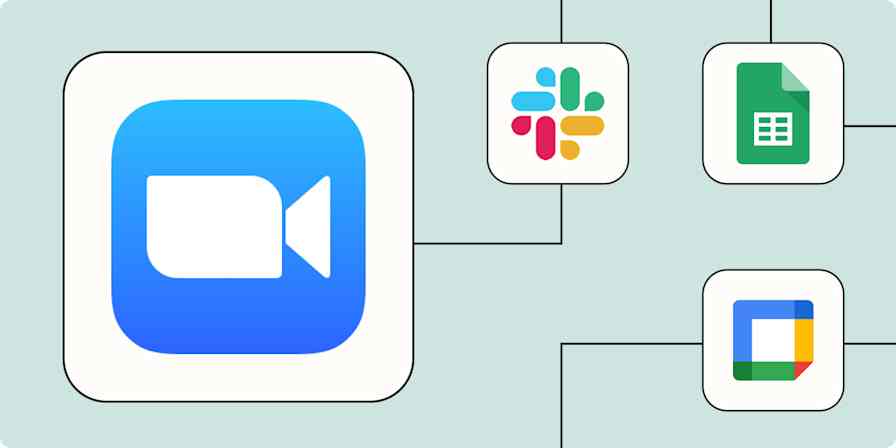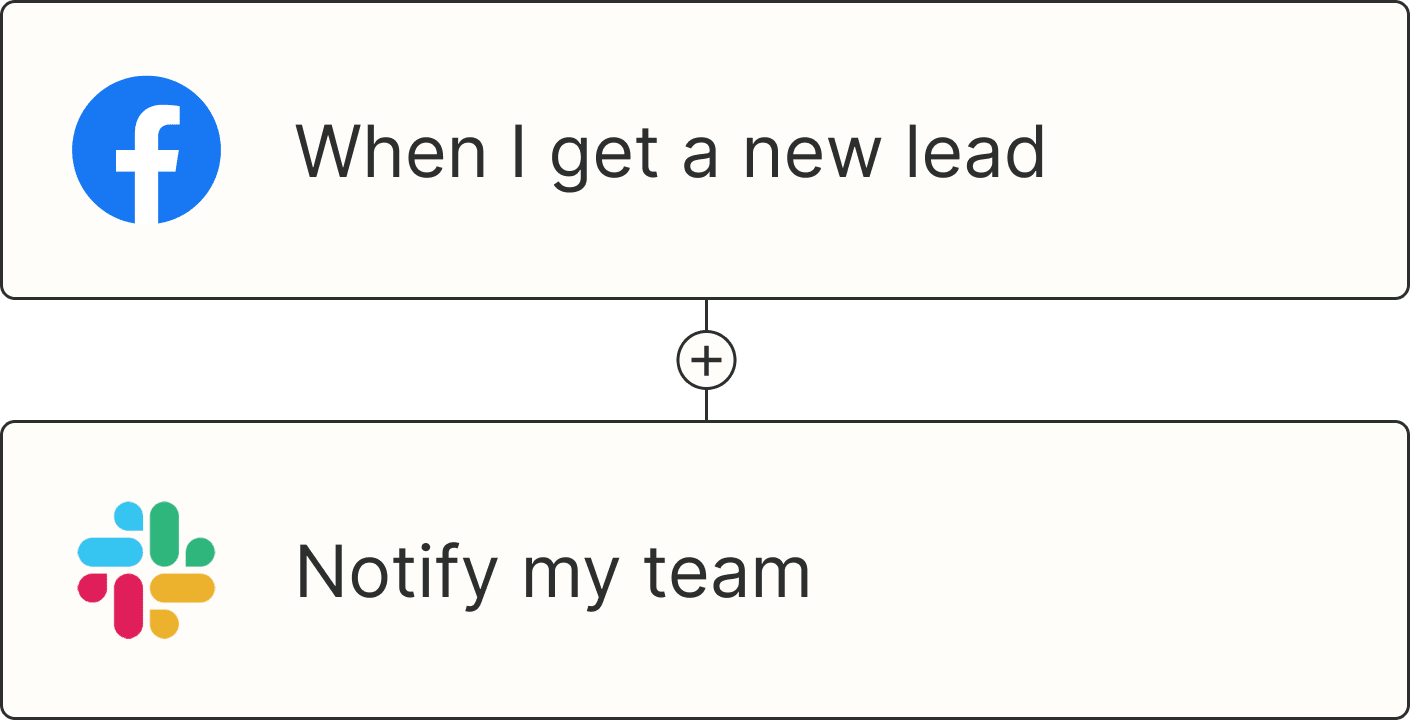While Zoom has largely taken over the video conferencing space, Google Meet (formerly Google Hangouts) offers some practical Google-specific features that make it an excellent video conferencing platform and Zoom alternative. Plus, Google is Google—we all know it isn't going anywhere.
So which of these video conferencing platforms is right for you? Based on my experience using both—including lots of new time spent with all the advanced features—I'll share each app's strengths and weaknesses. Read on for my breakdown of Google Meet vs. Zoom.
Table of contents:
Google Meet vs. Zoom at a glance
Generally speaking:
Google Meet is best for small organizations and individuals who want a user-friendly video conferencing solution that's already integrated with Google Workspace.
Zoom is preferable for larger organizations that need to accommodate more people and provide hosts with advanced controls.
| Google Meet | Zoom |
|---|---|---|
Price | ⭐⭐⭐⭐⭐ Free plan available for individuals; paid Google Workspace plans available for organizations Business Starter: $6/user/month Business Standard: $12/user/month Business Plus: $18/user/month Enterprise: Custom | ⭐⭐⭐⭐ Free plan available for individuals; paid plans available for organizations Workplace Pro: $15.99/user/month Workplace Business: $21.99/user/month Enterprise: Custom |
User-friendliness | ⭐⭐⭐⭐⭐ Anticipates user needs; minimalistic settings interface; only web-based | ⭐⭐⭐⭐ Slightly more complex interface with a variety of advanced settings; includes a desktop app |
Allotted group meeting time | ⭐⭐⭐⭐⭐ 60 minutes with free plan (1:1 meetings are unlimited); 24 hours with paid plans | ⭐⭐⭐⭐ 40 minutes with free plan; 30 hours with paid plans |
Participants allowed | ⭐⭐⭐⭐ Free + Business Starter: 100 Business Standard: 150 Business Plus: 500 Enterprise: 1,000 | ⭐⭐⭐⭐ Free + Workplace Pro: 100 Workplace Business: 300 Enterprise: 1,000 |
Video and background settings | ⭐⭐⭐⭐ Supports HD video; virtual backgrounds and background blur; lighting enhancements and touch-up filters | ⭐⭐⭐⭐⭐ Supports HD video; extensive virtual background customization and background blur; lighting enhancements and touch-up filters |
Chat | ⭐⭐⭐⭐ Saves the conversation logs of recorded meetings | ⭐⭐⭐⭐⭐ Can send private messages; continuous meeting allows participants to chat before, during, and after meetings |
Breakout rooms | ⭐⭐⭐⭐⭐ Paid feature; up to 100 breakout sessions per call | ⭐⭐⭐⭐⭐ Available on free plan; up to 200 breakout sessions per call |
Whiteboard | ⭐⭐⭐⭐⭐ Includes a built-in whiteboard with advanced features, like sticky notes, comments, and custom colors | ⭐⭐⭐⭐⭐ Includes a built-in whiteboard with advanced features, like sticky notes, comments, and custom templates |
Polls | Included | Included |
Screen sharing | ⭐⭐⭐⭐ Standard screen sharing (options for windows and tabs) | ⭐⭐⭐⭐⭐ Advanced screen sharing (options for second cameras, other apps, whiteboards, and more) |
Recording | ⭐⭐⭐⭐ Available with paid plans; recordings saved to Google Drive | ⭐⭐⭐⭐⭐ Local recording available on free plan; cloud recording available on paid plans |
Closed captioning | ⭐⭐⭐⭐⭐ Closed captioning and live transcription available | ⭐⭐⭐⭐⭐ Closed captioning and live transcription available |
Security | ⭐⭐⭐⭐⭐ Encryption, two-factor authentication, and some host management features | ⭐⭐⭐⭐⭐ Encryption, two-factor authentication, and advanced host management features |
Integrations | ⭐⭐⭐⭐ 200+ integrations, including Zapier | ⭐⭐⭐⭐⭐ Nearly 3,000 integrations, including Zapier |
Mobile experience | ⭐⭐⭐⭐⭐ User-friendly mobile app included; can launch polls and Q&A | ⭐⭐⭐⭐⭐ User-friendly mobile app included; offers mobile screen sharing |
Customer support | Self-service help center and community forums; premium support add-ons available | Self-service help center, chatbot support, and community forums; premium support add-ons available |
AI features | ⭐⭐⭐ Gemini for automated meeting recaps, AI-generated background images, audio and video enhancements, and real-time translation in 60+ languages; available in Business Standard plan and above | ⭐⭐⭐⭐ AI Companion for automated meeting recaps, whiteboard brainstorming, email and chat composition, task extraction, in-meeting question answering, and multi-speaker view; available in Workplace Pro plan and above |
What's not different between Google Meet and Zoom
Google Meet and Zoom are more similar than they are different. Both platforms offer:
Both paid and free plans
Chat, breakout room, poll, and built-in whiteboard features
Several background and video features and settings
Screen sharing and recording capabilities
Easy-to-access closed captioning
User-friendly interfaces
A ton of app integrations
Advanced security measures
Google Meet is simpler, for better or worse
As is Google's specialty, Google Meet aims to make the user's experience as pleasant as possible. As a Gmail user, starting a meeting was easy since there's an option to navigate to Google Meet on Gmail's Google Workspace toolbar.

When I started a meeting, the platform recognized that my surroundings were relatively dark and offered to brighten my video before I entered the call. It also prompted me to test my audio and video in advance, capturing and playing back a quick video to ensure I liked the way I sounded and looked—and reminding me to put some product in my hair.
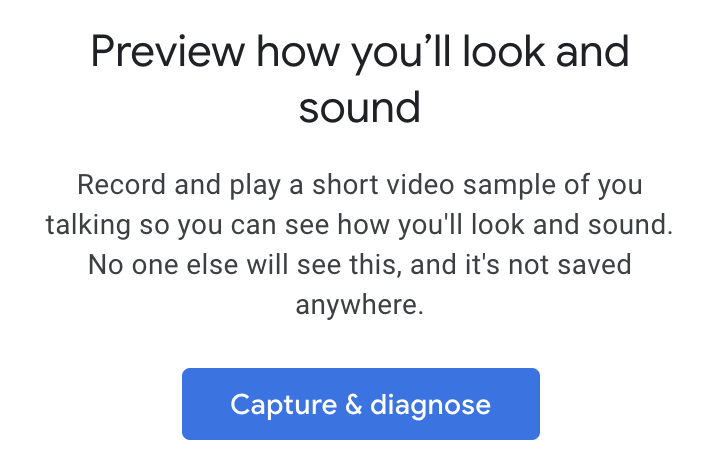
Once you're in a meeting, both apps give you everything you need—which interface you prefer will be fully personal. But I found Google Meet's settings to be easier to navigate than Zoom's. I was greeted with a few simple categories and options, compared to Zoom's dense menu of options. Here's Google Meet's general settings interface:

And here's Zoom's:

While they may feel overwhelming and complex at first, Zoom's numerous settings are appropriate considering the platform's advanced features. For example, Zoom allows you to connect an additional camera to your meeting and even share that camera's view when you share your screen. You can also share a mobile device's screen, a portion of your screen, or content from another application.

Google Meet, on the other hand, only allows you to share your full screen, a browser window, or a browser tab.

Google Meet and Zoom approach chat differently
While Google Meet and Zoom obviously specialize in video conferencing, they also offer chat functionality.
One of Zoom's chat selling points is the ability to send private messages to individuals during meetings. With Google Meet, you can only send messages that everyone in the call can see—no secrets or gossiping allowed.
Another Zoom feature that's spicing up the virtual meeting game is the ability to add GIFs to Zoom Team Chat through its native GIPHY integration. However, each search result only displays eight GIF options, limiting the variety and potentially leading to some repetitive moments during your virtual water cooler chats. And while both apps offer a complete emoji library, Zoom allows users to upload their own custom emojis—a feature that's only available with Google Meet extensions.
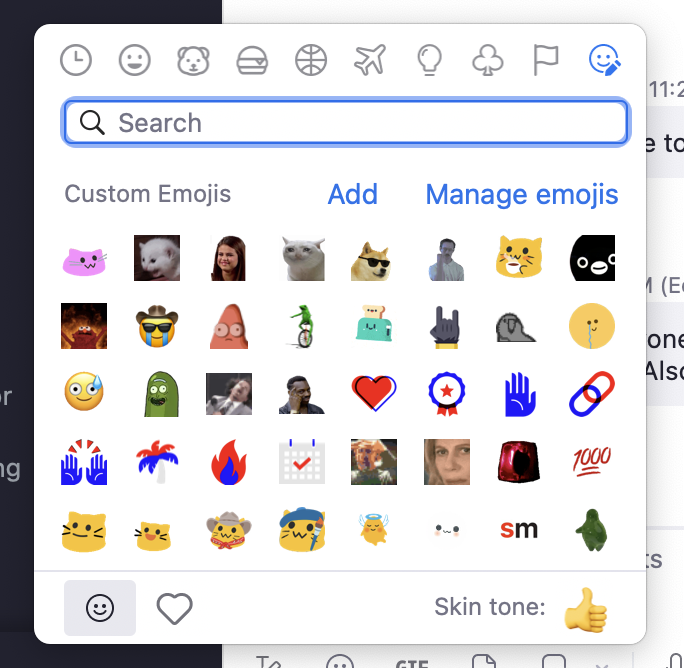
Both apps allow you to save the conversation logs of recorded meetings. This means if you miss a meeting and want to watch the recording later, you'll also have the chat logs to follow along with.
When it comes to real-time chat visibility, Google Meet maintains its traditional approach, where new users can't see any of the chats that were sent before they joined a meeting. Likewise, if a user leaves then rejoins the call, any messages that were sent before they left disappear.
Meanwhile, Zoom has recently introduced a feature called "continuous meeting chat" that allows participants to communicate before, during, and after meetings through a dedicated group chat. (Though I'm not sure why anyone would want to talk about a meeting when it's not even happening yet?) What I do appreciate about this feature is that it solves the age-old problem of having to resend links to late joiners—now they can access all previous messages and shared files. Plus, if you're running late to a Zoom meeting, you can send a message that will appear in the in-meeting chat, keeping everyone in the loop.
Zoom has expanded beyond video conferencing to compete with Google Workspace
While most people know Zoom for its video conferencing capabilities, the platform has recently made bold moves to position itself as a complete workplace solution. With the introduction of Zoom Workplace, the platform now offers a suite of tools that feel remarkably familiar to Google Workspace users.
In addition to its flagship video conferencing, Zoom now provides:
Mail and calendar services
Team chat
Docs
Whiteboard
Phone system integration
This expansion adds another layer to the decision-making process. While most users initially compare these platforms for their video conferencing capabilities, the choice now potentially impacts your entire workflow. That said, you're not required to use all the Zoom Workplace features—many organizations successfully use Zoom for video conferencing while sticking with Google Workspace or Microsoft 365 for their other productivity needs.
Both apps introduced AI assistants, but Zoom's has more practical features
Surprising absolutely no one, Zoom and Google both have AI meeting assistants. Both Zoom's AI Companion and Google's Gemini have the ability to email auto-generated meeting recaps to invitees. And because both apps take notes in real time, they offer latecomers a quick catch-up on what they've missed when they join a meeting.
Google seems particularly proud of Gemini's ability to create AI-generated background images from user prompts. It's a feature that, while innovative, comes across as a bit gimmicky—something users might play around with once for a bit of fun but not a staple in their daily virtual meeting routine.

But Gemini also brings some practical tools to the table, like the ability to step in for you in meetings you're not able to attend. It can deliver your message on your behalf and send a recap afterward, ensuring you're always in the loop. Adding to its utility, Gemini offers real-time translated captions in over 60 languages, breaking down language barriers in a way that feels like magic. This feature fosters inclusivity and global collaboration, making it a potentially indispensable tool for international teams.
Google's choice to bury the lede and instead focus on a novelty feature is an interesting one. Regardless, rather than keeping Gemini as a standalone premium service, Google is now bundling its best AI features directly into Google Workspace subscriptions. It's a smart move that transforms what was once a premium add-on into a core productivity enhancement.
Compared to Gemini, Zoom's AI Companion feels more like a savvy meeting assistant. It lets participants ask preset or custom questions about the meeting's content. Imagine stepping away for coffee or disassociating for a minute and returning to ask, "Was my name mentioned?" or "What are the action items?" Its Smart Recording feature turns recordings into neatly organized chapters with highlighted summaries, great for anyone who doesn't have the time or desire to watch hours of footage. Available on all paid plans, Zoom's AI Companion integrates smoothly into its existing ecosystem, adding value without extra cost.
Both Zoom and Google Meet have solid integrations
Both Zoom and Google Meet excel in their integration capabilities. Zoom, known for its expansive ecosystem, supports many integrations directly within its platform, perfect for accessing various functionalities without leaving your meeting.
On the other hand, Google Meet shines with its seamless integration into other Google Workspace apps. It allows easy transitions between Calendar, Drive, and Gmail, making it a natural choice for those already embedded in Google's orbit.
With Zapier, you can integrate either Google Meet or Zoom with your other favorite apps, allowing every platform you use to communicate seamlessly. For example, you can automatically upload recordings or create meetings based on form submissions. Learn more about how to automate Google Meet and how to automate Zoom, or get started with one of these pre-made templates.
Send Google Meet links when new appointments are booked in Zoho Bookings
Create Google Meet meetings for new Jotform submissions
Zapier is the most connected AI orchestration platform—integrating with thousands of apps from partners like Google, Salesforce, and Microsoft. Use interfaces, data tables, and logic to build secure, automated, AI-powered systems for your business-critical workflows across your organization's technology stack. Learn more.
Both platforms are highly secure, but Zoom beats out Google Meet due to advanced host management features
If you remember the early days of the pandemic when strangers were hopping into private conference calls and dropping the F-bomb (or worse), you understand the need for video conferencing security.
Both Google Meet and Zoom do a great job here, offering real-time encryption and two-factor authentication. Google Meet also encrypts recorded meetings stored in its users' Drive accounts. After "Zoombombing" became a newsworthy problem, Zoom also began offering all of its users end-to-end encryption (E2EE)—a feature it had previously been caught lying about offering.
Additionally, Zoom landed in hot water after updating its terms of service to allow AI training using customer data. That didn't sit well with a lot of folks, so Zoom walked back that decision.
Despite these controversies, Zoom provides hosts with advanced meeting management features that take its commitment to security seriously. For example, Zoom hosts can password protect, set up authentication profile restrictions, and add waiting rooms to their calls. With waiting rooms, the host has to accept each user before they're allowed into the call.
Plus, Zoom gives hosts a lot of in-meeting capabilities, like muting the audio or disabling the video of individual participants. It even has a feature called "Suspend Participant Activities," which turns off all video, audio, chat, screen sharing, recording, and more. It's the emergency shutdown you need when things really get out of hand (hopefully not too often).
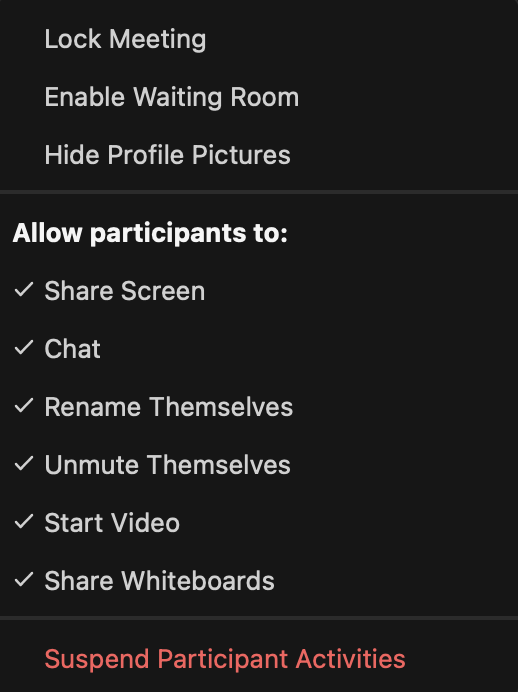
Zoom offers desktop apps, while Google Meet is entirely web-based
Much like Google's other set of web-based tools, Google Meet sessions open as browser windows—there's no desktop app interface. Meanwhile, Zoom offers desktop apps for Windows, macOS, and Linux that users can use to launch and join meetings.

Whether you want your video conferencing solution to come with its own app is up to you. Personally, I'm a big fan of Zoom's dedicated app interface. But Google Meet cleverly compensates for its browser-based approach with an automatic picture-in-picture mode, which kicks in when you switch tabs during a meeting (available in Google Chrome). This handy feature keeps your video call visible and accessible while you do important meeting things like taking notes, reviewing related documents, or playing Agar.io.
I found a pretty amusing glitch when sharing my screen on Google Meet: the infinity mirror. Whenever I clicked on the tab I was using to run my meeting, the screen sharing feature would capture an endless tunnel of browsers that would make Christopher Nolan jealous.
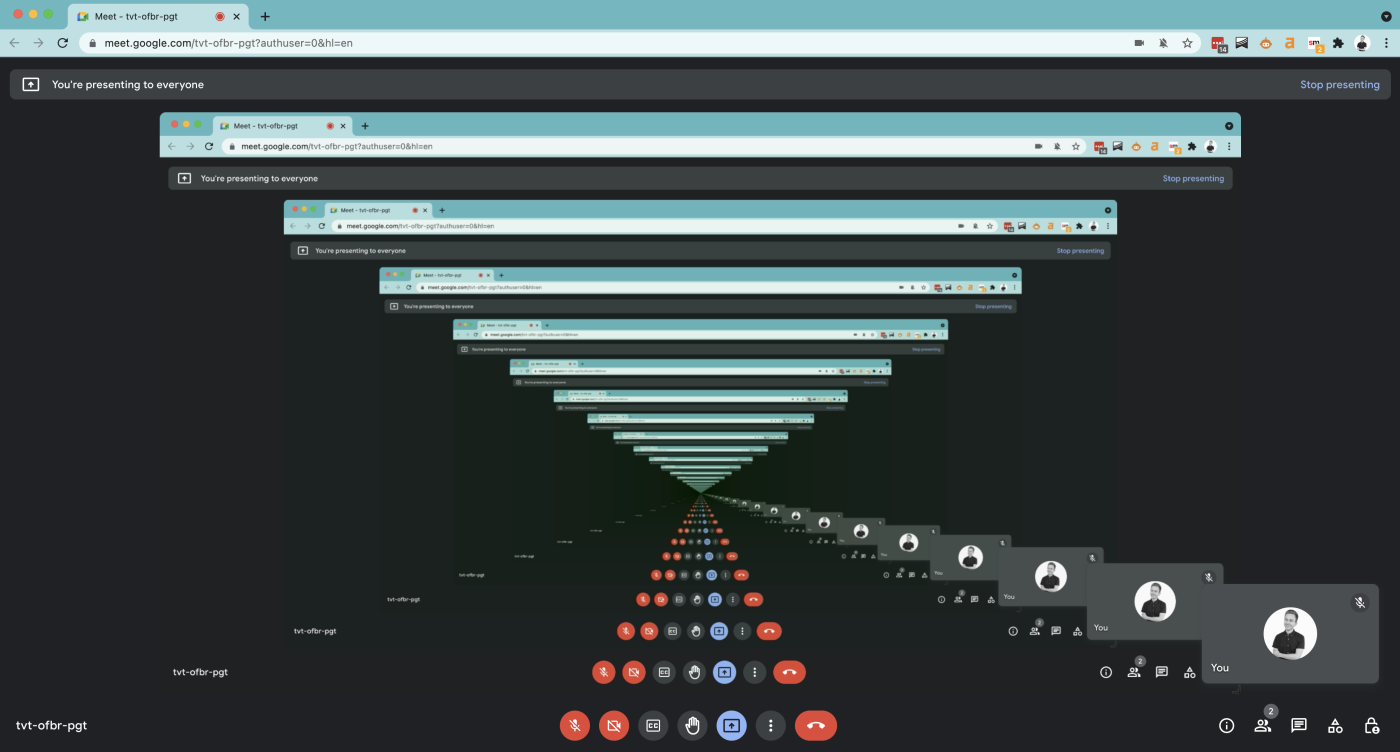
Thankfully, I discovered that sharing just a specific window or tab completely avoids this trippy time-space continuum situation. With Zoom's desktop app, this isn't an issue because the app minimizes and removes Zoom features from other users' views when screen sharing (though, depending on the placement, it can create a little gray bar over your screen share).
Google Meet vs. Zoom: Which is best for you?
It isn't easy to declare a winner in the Google Meet vs. Zoom face-off—there aren't all that many striking differences between them. Generally speaking, Zoom is best for larger organizations and educational institutions due to its advanced sharing and presentation features and host management tools. Google Meet works for anyone but is preferable if you need a simple, user-friendly, and accessible conferencing solution.
Google Meet vs. Zoom FAQ
Google Meet and Zoom function very similarly, but in which contexts does each stand out?
What is the free Zoom time limit?
Free Zoom meetings are capped at 40 minutes. After 40 minutes, you'll need to restart the meeting if you wish to continue the conversation.
Does Google Meet have a time limit?
Yes, Google Meet's free version has a 60-minute time limit for group video calls. One-on-one calls can last up to 24 hours.
Is Zoom or Google Meet better for students?
Zoom meetings can host significantly more people than Google Meet meetings. Plus, Zoom offers a suite of tools that make remote learning easier for educational institutions under its Zoom for Education plans. For this reason, Zoom is typically preferred over Google Meet for students and teachers.
What are the disadvantages of Google Meet?
While Google Meet is known for its user-friendly interface and seamless integration with the rest of Google Workspace, it does have some drawbacks:
Compared to Zoom, it offers fewer advanced features, such as more limited options for screen sharing and host management.
Google Meet's reliance on the Google ecosystem can be a disadvantage for users who prefer other platforms or services.
Customization options are also more limited in Google Meet, providing less flexibility in tailoring the meeting experience.
What are the disadvantages of Zoom?
Zoom, despite its popularity and extensive features, also has its downsides:
Zoom's wide range of features can make its interface feel more complex and less intuitive, especially for those unfamiliar with video conferencing tools.
Accessing advanced features and longer meeting durations in Zoom often requires a paid subscription, which can be a barrier for some users.
Although Zoom has made significant improvements to its security, some users may have concerns about past security issues.
Why do people use Zoom and not Google Meet?
People often choose Zoom over Google Meet for the following reasons:
More features: Zoom offers a wider array of features, including advanced screen sharing options and host management features.
Greater flexibility: Zoom provides more control over meeting settings and participant management.
Wider platform compatibility: Zoom is available on more platforms and devices than Google Meet.
Familiarity and popularity: Zoom gained immense popularity during the pandemic, and its widespread use has made it a familiar and preferred choice for many.
Related reading:
This article was originally published in January 2023 by Luke Strauss and has also had contributions from Allisa Boulette. The most recent update was in January 2025.





